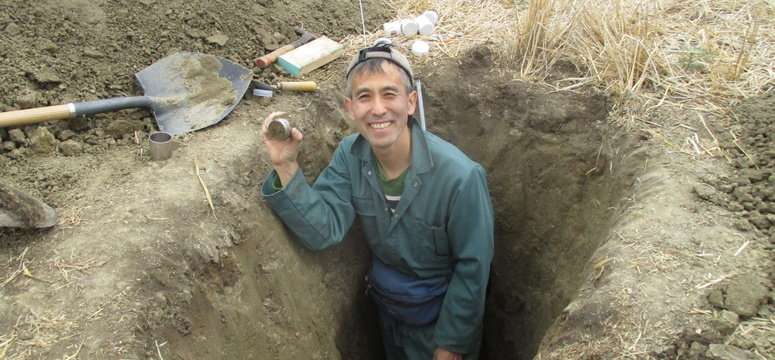Researcher gives a glimpse into a limited resource—groundwater

Masaki Hayashi's lifelong interest in and research about groundwater has led him to help the Government of Alberta implement policy and regulations that affect how Albertans manage the use of groundwater.
What are the rules around the use of something as naturally occurring as groundwater?
Groundwater is a limited resource, one that should be top-of-mind for everyone. Hayashi has dedicated his 21-year career at the University of Calgary as a field-based researcher to understanding its impacts.
"Lots of people have trouble relating to groundwater because it's underground and you can't see it," says Dr. Hayashi, Ph.D., who is a professor in the Faculty of Science's Department of Geoscience.
Groundwater in demand
In Calgary, our tap water comes from reservoirs. Once you step outside the city to the prairies, most residents draw from a well, which relies on groundwater. These wells are screened in an aquifer, which is an underground layer of water-bearing permeable rock. Groundwater is extracted using a well, with many wells attached to one aquifer.
"It's like putting a bunch of straws in one cup and drinking from the same cup. The more straws that go in, the more rapid consumption from the cup."
However, Hayashi explains that sometimes a "big straw" (for example, industry) comes in and takes more water, which causes the water in the cup to decrease faster. Fortunately, the water in the cup doesn't disappear, thanks to snowmelt and rain, otherwise known as groundwater recharge. The snowmelt and rain water that goes into the soil makes its way to the groundwater, which is otherwise known as the water table.
Our goal: Use groundwater without depleting it
"The definition of sustainability is using a resource for our benefit while also leaving it for future generations. This also relates to the concept of groundwater sustainability—we want to use the groundwater without depleting it," says Hayashi.
Knowing the amount of groundwater recharge allows policy-makers to develop goals and guidelines for how we manage groundwater in the province. Hayashi and his fellow researchers, Dr. Edwin Cey, Ph.D., and Dr. Larry Bentley, Ph.D., work with the Government of Alberta to input their research into this policy-making. Thanks to Hayashi's research, Alberta will have a series of maps that can indicate groundwater recharge amounts for the Alberta prairies.
But for Hayashi, this is only the beginning of his research on groundwater. He has also started conducting research on climate change, warmer temperatures and the resulting impacts on groundwater.
Climate changes opens new avenues of research
"With warmer temperatures from climate change, we don't really know how this will influence groundwater recharge because we might get more snow, or we might get more rain and how will that actually impact groundwater?" says Hayashi. "We need to see the results over the next 100 years. Research is trying to account for that."
While 100 years may seem like a long way away, Hayashi hopes in the meantime, people will become more aware of groundwater and its limited nature.
"In Alberta, we have been pumping as much groundwater as needed because there hasn't been too much stress on it like in other parts of the world, but it's a limited resource, so we need to use it like a limited resource and lower our groundwater consumption."
Provided by University of Calgary


















